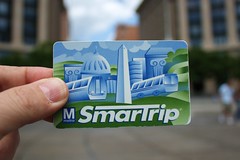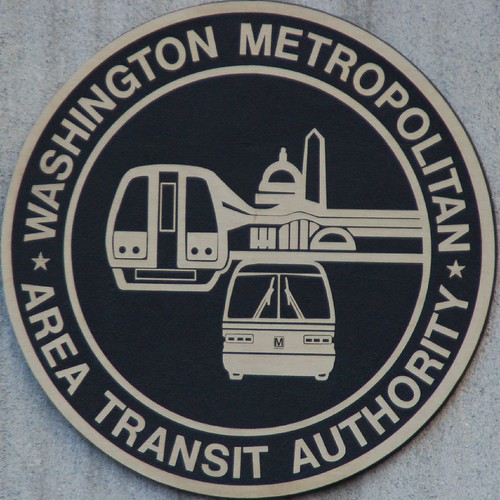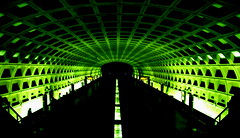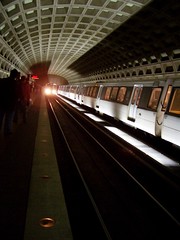This time, it’s for real — Washingtonians, get ready for the new metrorail line to Dulles Airport
(Source: Dr. Gridlock, Washington Post)
This time, it’s for real. The Washington region can now plan on construction of a new Metrorail line through Tysons Corner and out to Reston. U.S. Transportation Secretary Ray LaHood signed an agreement this morning that means all hurdles have been cleared for the crucial $900 million federal portion of the financing.
A quote that I could attribute to any number of Northern Virginia leaders who are at the U.S. Department of Transportation today: “This is a great day.” The grand signing ceremony in the DOT atrium is more than just a crowded photo op for state and federal officials. It’s a breakthrough for travelers in the Washington region. This will help organize Tysons Corner for the 21st Century. Four stations will be built there. And it will provide a transit line for at least a few more generations of Washington area commuters.
Virginia Gov. Timothy M Kaine said he had never worked on anything so complicated. In his remarks this morning, he noted that the project spanned federal administrations, and praised the work of former transportation secretary Mary Peters during the past year.

Shaking hands after the signing are, board chairman of the Metro Washington Airport Authority H.R. Crawford Honorable, left, and U.S. Transportation Secretary Ray LaHood. Just behind them, left to right, are former Senator John Warner, Senator Mark Warner, Va. Gov. Timothy M. Kaine, and Rep. Frank Wolf. (Gerald Martineau/Post)




